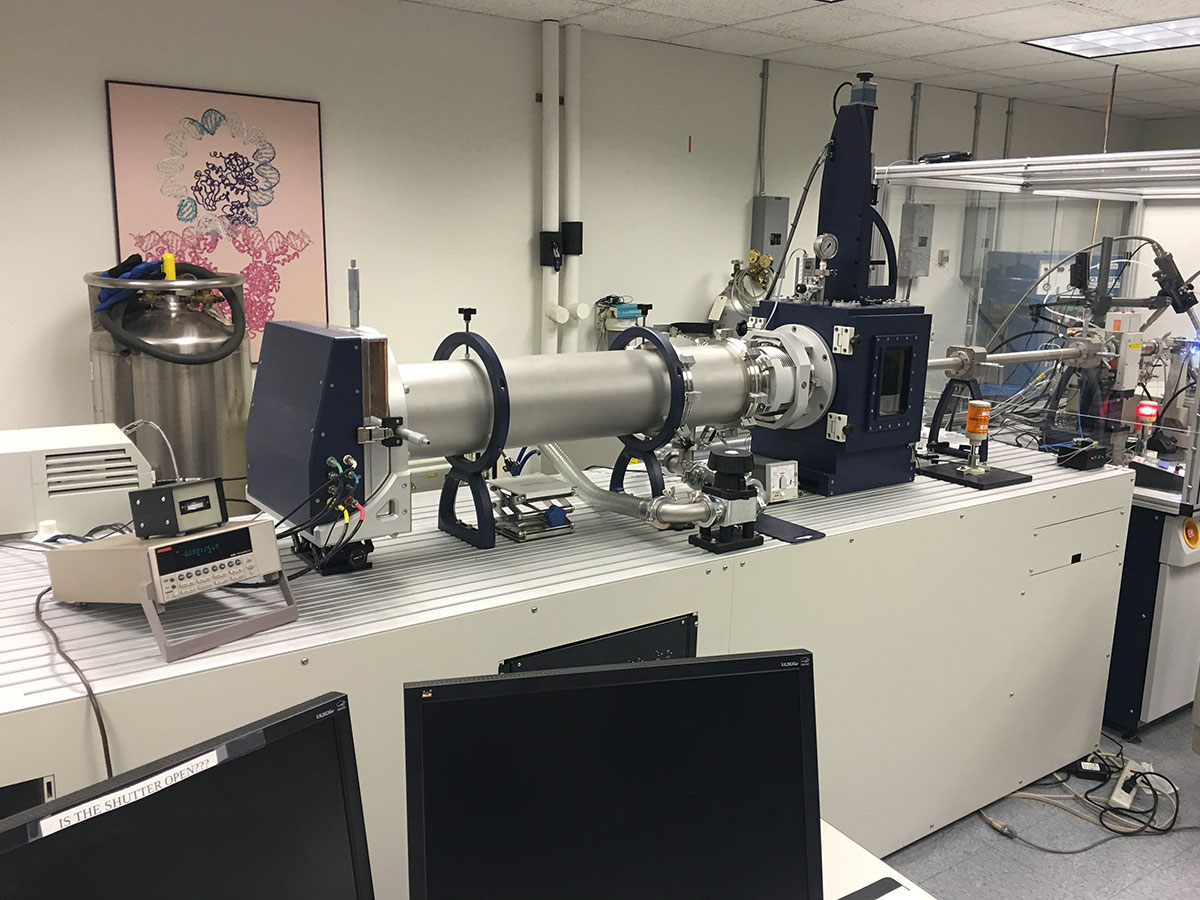Small-Angle X-ray Scattering
 The angular-dependent elastic scattering of X-rays from macromolecules at very low angles can provide quantitative information about the shape, size, and physical properties of macromolecules in solution at low resolution. Further, with more recent innovations in ab initio shape reconstruction and atomic modelling, this information can provide a rigorous test for available atomic molecules. The technique requires samples of the highest purity and monodispersity, as validated by other complementary measures.
The angular-dependent elastic scattering of X-rays from macromolecules at very low angles can provide quantitative information about the shape, size, and physical properties of macromolecules in solution at low resolution. Further, with more recent innovations in ab initio shape reconstruction and atomic modelling, this information can provide a rigorous test for available atomic molecules. The technique requires samples of the highest purity and monodispersity, as validated by other complementary measures.
- Rigaku PSAXS small-angle X-ray scattering system equipped with Osmic mirror optics, a 3-pinhole enclosed pre-flight path, an evacuated sample chamber with customized sample holder, adjustable sample-to-detector distances, and gas-filled multi-wire detector served by the aforementioned rotating anode generator. The accessible q (where q=4πsinθ/λ) is 0.0055 < q < 0.25 Å-1, sufficient for the characterization of particles with length scales upwards of 500 Å. A dedicated computer for data collection and analysis using the Rigaku SAXSGUI software package operates the instrument.
Contact: Kushol Gupta | kgupta@pennmedicine.upenn.edu
Location: G11 Blockley Hall
The Blockley Hall X-ray Laboratory is on hiatus until further notice and will be restarted once moved to new space here on the Penn Campus
Penn Beamtime Allocation Group (BAG) Cohort | NSLS II
Kushol Gupta is the PI of an active BAG cohort with NSLS II for X-ray Crystallography (AMX, FMX), X-ray Footprinting, and Small-Angle X-ray Scattering. This cohort currently includes several groups from across Penn, Wistar, CHOP, and Fox Chase Cancer Center. Block Allocation Groups (BAGs) are a mode of beam time access at NSLS-II intended for groups of researchers that want to combine their short beam time requests into a single proposal in order to permit greater flexibility in beam time allocation and scheduling. BAG proposals may be motivated by shared scientific interest, geographical location, affiliation, common experimental setup, or other synergistic reasons. Combining the beam time of individual groups permits greater flexibility in the choice of projects and samples during a given allocation period and offers the individuals in the BAGs the benefit of access to more regular allocation of beam time.
Laboratories interested in joining this cohort should contact Dr. Gupta at kgupta@pennmedicine.upenn.edu.

